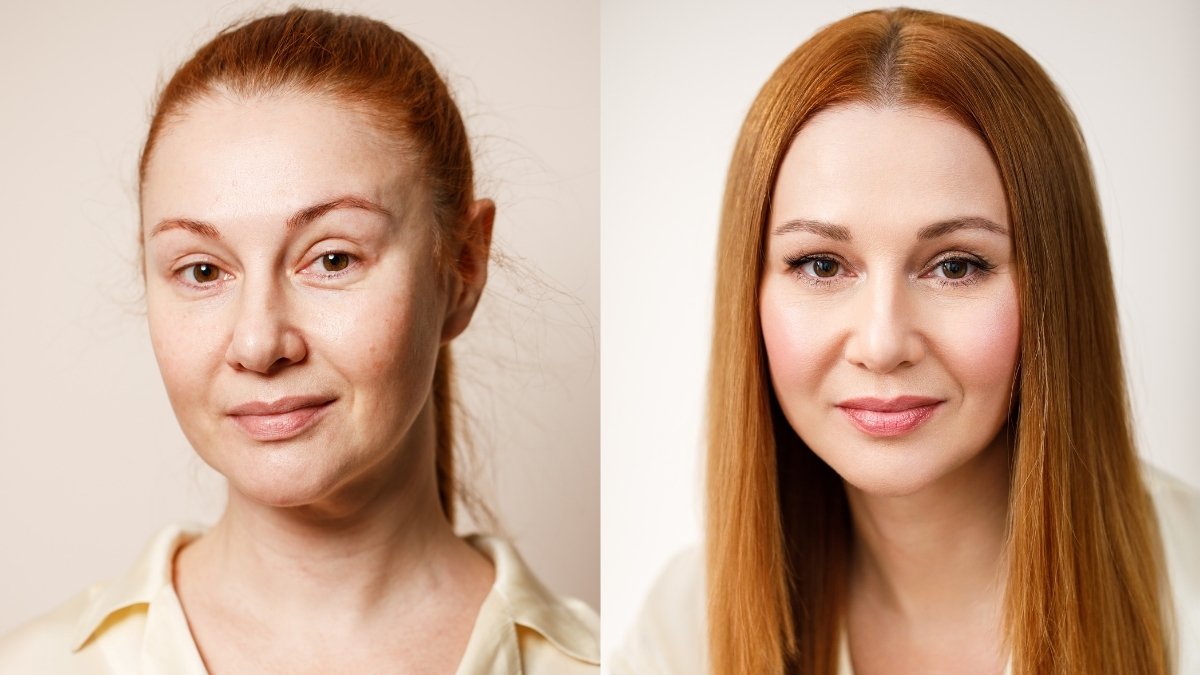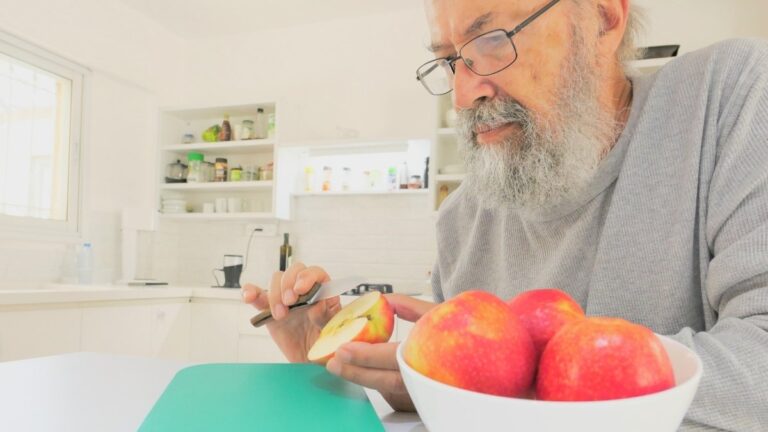Why Your Skin Thins After 40: 8 Hidden Habits Accelerating Wrinkles (Dermatologists Explain)
At 42, Sarah noticed her concealer wasn’t covering dark circles like it used to—her skin had become so thin that every vein showed through.
If you’re wondering why skin thins after 40, here’s the shocking reality: your skin loses 1% of collagen annually after age 40. While most people blame genetics for aging skin, dermatologists reveal that everyday habits are the real culprit behind accelerated thinning.
These eight hidden behaviors are sabotaging your wrinkle prevention efforts without you realizing it. The good news? Understanding what’s damaging your skin means you can reverse it. Here’s what leading dermatologists want you to know.
Habit Title Placeholder
Summary placeholder.
Why It Happens & The Fix:
Hidden Habit #1 – Over-Exfoliating Your Delicate Skin
You think you’re helping your skin. But scrubbing away dead cells every day might be your biggest mistake after 40.
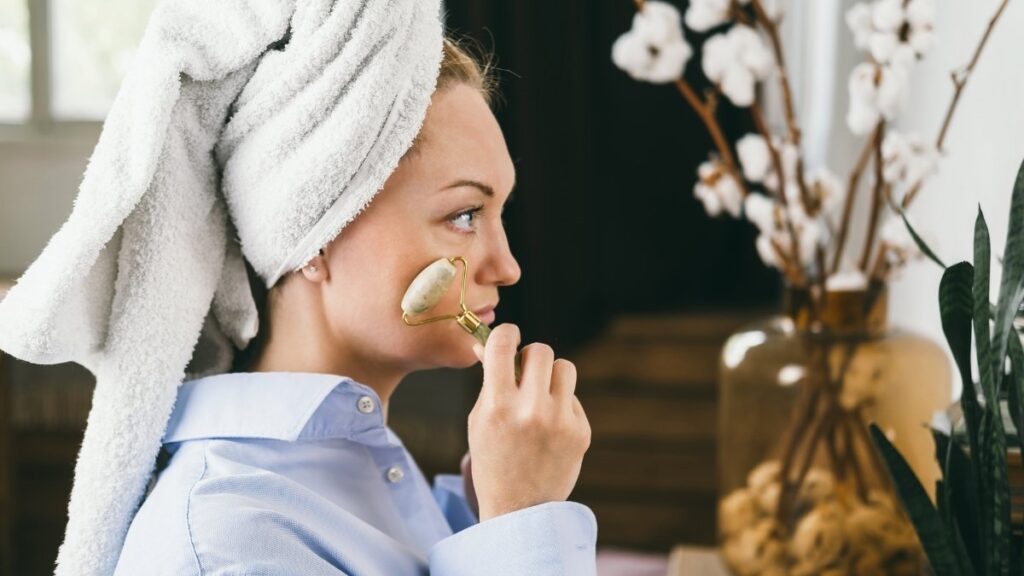
Your skin barrier gets weaker as you age. It can’t handle the same treatment it did in your 20s. When you exfoliate daily, you strip away protective oils your skin desperately needs. This leaves your face raw, red, and more prone to wrinkles.
There are two ways to over-exfoliate. Physical scrubs use tiny particles to remove dead skin. Chemical exfoliants like glycolic acid and salicylic acid dissolve the bonds between skin cells. Both can damage your skin barrier when used too often.
Dr. Michelle Henry notes that using retinol AND glycolic acid daily can strip away 40% more protective oils than necessary. Your skin starts to look thin and irritated instead of glowing.
Here’s how to spot over-exfoliation: Your face stings when you apply products. You see more redness than usual. Your skin feels tight and looks shiny but not in a good way. Fine lines seem more visible.
Hidden Habit #2 – Sleeping on Your Side (Same Position Every Night)
You wake up with pillow marks on your face. They used to disappear in minutes. Now they stick around for hours.

That’s because sleep wrinkles become permanent after 40. Your skin loses collagen and elasticity as you age. It can’t bounce back from compression like it used to.
When you sleep on your side, your face gets squished against the pillow for 7-8 hours straight. This creates creases in your skin. Young skin springs back. Mature skin remembers these folds and turns them into permanent lines.
The science is simple. Compression wrinkles form when your skin gets pressed and folded repeatedly. Your face has less collagen to keep it firm and elastic. So those nightly creases become deeper over time.
Your cheek, around your eyes, and along your jawline are most at risk. These areas touch the pillow first when you sleep on your side.
Here’s what actually works: Silk pillowcases are better than satin. Real silk creates less friction and stays cooler. It lets your skin glide instead of grip.
Hidden Habit #3 – Skipping SPF on “Cloudy” Days
The sun isn’t out, so you skip sunscreen. This single choice might be aging your skin faster than anything else you do.

Clouds don’t block UV rays like you think. Up to 80% of the sun’s rays punch right through cloudy skies. You’re getting a full dose of aging UVA rays without realizing it.
UVA rays are the real problem after 40. They go deep into your skin and target the layers where collagen lives. These rays don’t cause sunburn, so you don’t notice the damage happening. But they break down the proteins that keep your skin firm and thick.
Here’s the scary part: Dermatologists report that 90% of visible aging is caused by sun exposure. Not genetics. Not time. Sun damage.
After decades of “minor” exposure, the effects compound. Those cloudy day skips add up to major skin thinning and wrinkles.
Indoor UV exposure makes it worse. Windows block some rays but not all UVA light. Your car windshield, office window, and home all let in aging rays. Computer screens and phones emit blue light that might also damage skin cells.
Mature skin needs stronger protection. Look for SPF 30 or higher with broad-spectrum coverage. Zinc oxide and titanium dioxide work best for sensitive, aging skin.
Hidden Habit #4 – Using the Wrong Moisturizer for Your Age
Your favorite moisturizer worked perfectly for years. Now your skin drinks it up and still feels dry an hour later.
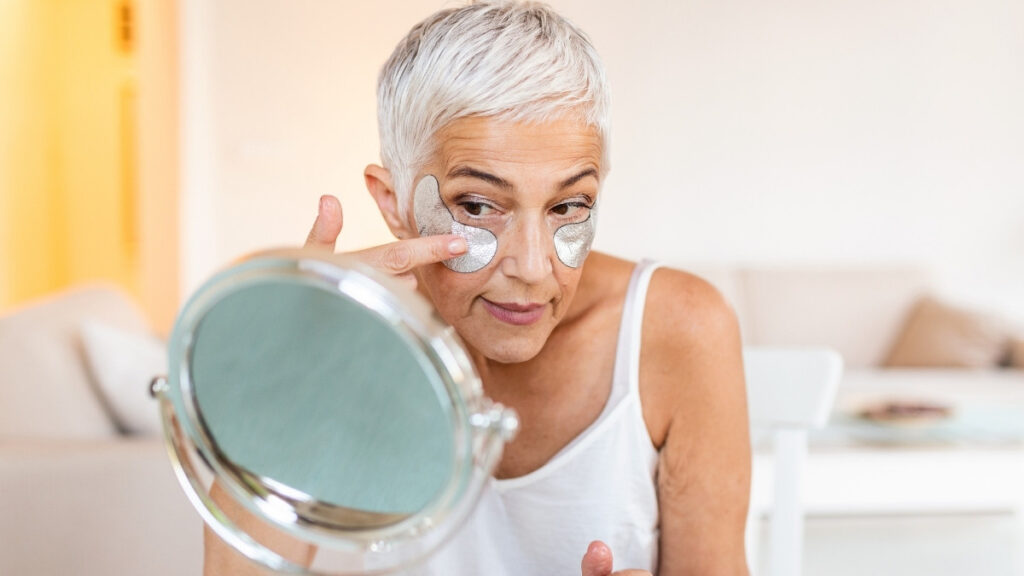
Your skin changes after 40. The moisturizer that kept you glowing in your 20s won’t cut it anymore. Your skin barrier gets thinner and loses water faster. You need different ingredients to keep it plump and healthy.
Young skin makes plenty of its own ceramides, hyaluronic acid, and natural oils. Mature skin doesn’t. A light lotion that worked before now leaves your skin looking flat and feeling tight.
After 40, you need ceramides to rebuild your skin barrier. Look for niacinamide to reduce inflammation and boost moisture retention. Peptides help signal your skin to make more collagen. These ingredients weren’t crucial before, but they’re essential now.
The hydration-plumping connection becomes critical as you age. Well-moisturized skin looks fuller and smoother. Dry skin emphasizes every line and makes your face look older.
Oil-based moisturizers work better for mature skin than water-based formulas. Your skin needs those protective oils to prevent water loss. Look for ingredients like squalane, jojoba oil, or ceramides high on the ingredient list.
Layer your products for maximum absorption. Start with a hydrating serum, then apply moisturizer while your skin is still damp. This traps more water in your skin.
Hidden Habit #5 – Facial Expressions + Muscle Memory
You squint at your phone 100 times a day. You furrow your brow when you concentrate. You purse your lips when you’re thinking.
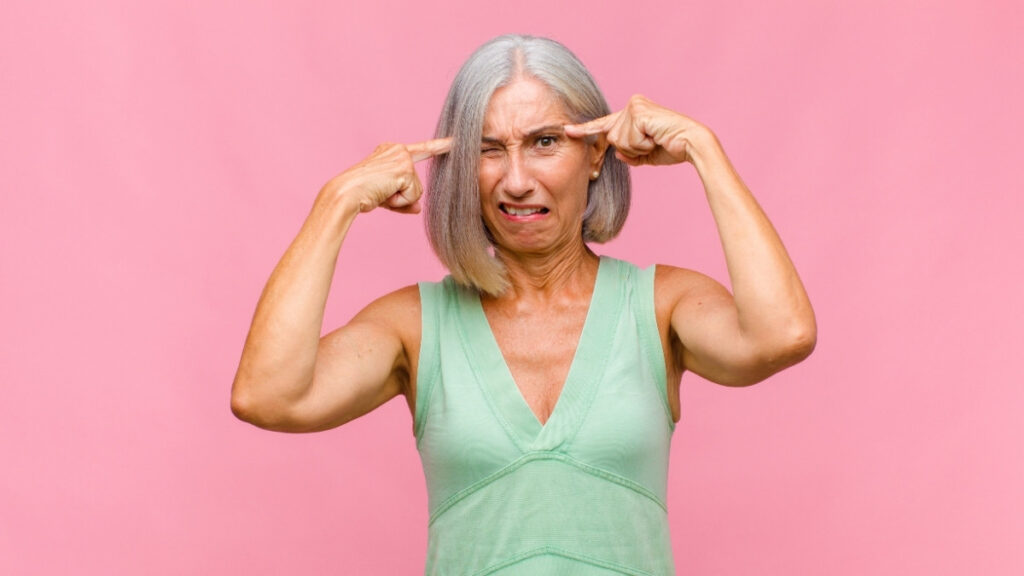
These tiny movements seem harmless. But they’re carving permanent lines into your face.
Repetitive facial movements create wrinkles through muscle memory. Every time you make an expression, your skin folds in the same places. Young skin bounces back. Skin with less collagen holds onto these creases and turns them into permanent lines.
Smartphone users average 2,617 phone checks per day, leading to “tech neck” and jaw tension wrinkles. All that squinting at small screens creates crow’s feet and forehead lines faster than natural aging alone.
Modern habits make expression lines worse. You crane your neck to look at screens, creating horizontal neck wrinkles. You tense your jaw during video calls. You raise your eyebrows when you’re surprised by notifications.
The decreased collagen after 40 means these expression lines set faster and deeper. Your skin doesn’t have the elastic fibers to snap back into place like it used to.
Here’s what helps: Notice your facial habits. Do you always squint in bright light? Get better sunglasses. Do you furrow your brow when you read? Hold your phone higher and make the text bigger.
Hidden Habit #6 – Not Adjusting Your Diet for Skin Health
You eat the same foods you always have. But your skin needs different nutrition after 40 to stay thick and healthy.

Sugar is your skin’s enemy after 40. It accelerates collagen breakdown through a process called glycation. When sugar molecules attach to collagen proteins, they create harmful compounds that make your skin stiff and weak. This shows up as sagging, wrinkles, and thinning.
Inflammation from poor diet choices makes skin aging worse. Processed foods, excess sugar, and too much alcohol create chronic inflammation in your body. This inflammation breaks down collagen faster and makes your skin look older than your years.
Your collagen production drops by 1% every year after 30. By 40, you’re making significantly less of the protein that keeps your skin firm. You need specific nutrients to support what collagen production you have left.
Vitamin C helps your body make new collagen. Vitamin E protects existing collagen from damage. Omega-3 fatty acids reduce inflammation and keep skin cells healthy. Zinc helps repair damaged skin tissue.
Hydration needs change with age too. Your skin holds less water naturally, so you need to drink more to keep it plump. Aim for half your body weight in ounces of water daily.
Hidden Habit #7 – Stress Without Recovery
You handle stress like you always have. But chronic stress is aging your skin faster than you realize.

Cortisol, your body’s main stress hormone, directly breaks down collagen. When you’re constantly stressed, your cortisol levels stay high. This accelerates skin aging by 10+ years compared to people who manage stress well.
The sleep-stress-skin cycle makes everything worse. Stress disrupts your sleep. Poor sleep increases stress hormones. High cortisol breaks down the collagen your skin needs to stay firm and thick. You wake up looking older and feeling more stressed.
Chronic stress also reduces blood flow to your skin. This means fewer nutrients and less oxygen reach your skin cells. Your complexion looks dull and tired because it literally is.
High cortisol levels thin your skin over time. Stress hormones break down the proteins that keep your skin structure strong. This shows up as fine lines, sagging, and a loss of firmness that makes you look older than your actual age.
Here’s what works: Meditation shows measurable skin improvements in studies. Just 10 minutes a day can lower cortisol levels and improve skin thickness. Exercise also reduces stress hormones and increases blood flow to your skin.
Hidden Habit #8 – Inconsistent Skincare Routine
You use products when you remember. Some nights you’re too tired. Some mornings you’re too rushed.
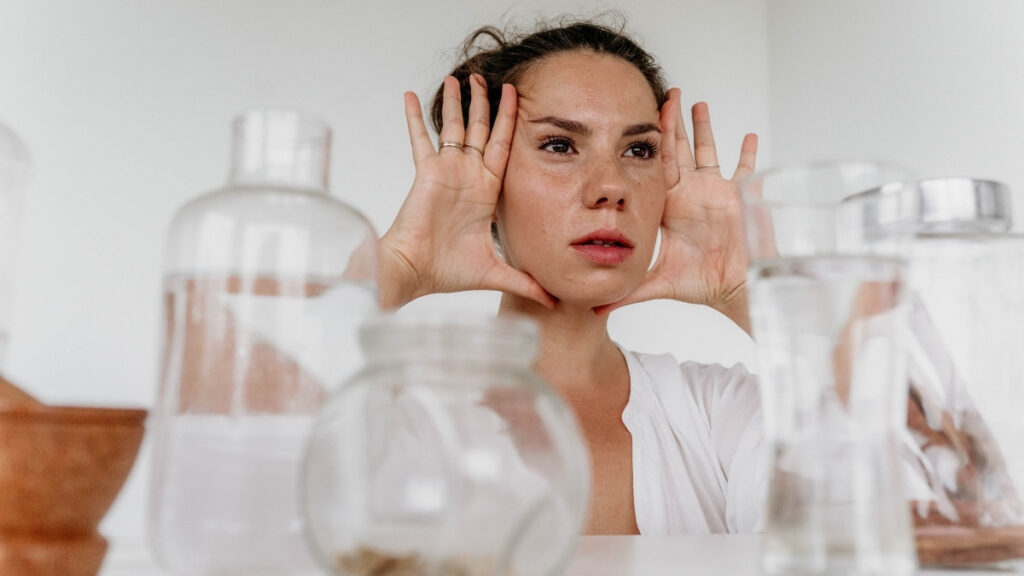
This on-and-off approach doesn’t work after 40. Your skin needs consistent care to show improvement, and it takes 28+ days to see changes from any new routine.
Mature skin is less forgiving than young skin. It can’t recover from missed care as easily. When you skip your routine, you lose ground. Your skin doesn’t just stay the same – it actually gets worse faster.
Morning and night routines serve different purposes. Morning products protect your skin from daily damage. Sunscreen, antioxidants, and light moisturizers prep your face for the day. Night products repair and rebuild while you sleep. Retinol, peptides, and heavier creams work best when your skin is in recovery mode.
Here’s a sustainable routine framework for busy lifestyles:
Morning (5 minutes): Gentle cleanser, vitamin C serum, moisturizer with SPF.
Evening (5 minutes): Remove makeup, cleanse, treatment product (retinol or peptides), night moisturizer.
Start with just these basics. Add more products only after these become automatic habits.
Product layering order matters for effectiveness. Thinnest to thickest: cleanser, serums, moisturizer, oils/sunscreen. Wait 30 seconds between layers so each one absorbs properly.
Conclusion
Your skin changes after 40, but you’re not powerless. The 8 hidden habits we covered can damage thin skin fast. But small changes add up over time.
Remember: collagen loss, slower cell turnover, and hormonal changes are normal. You can’t stop them completely. But you can slow them down with the right approach.
Gentle, consistent care beats aggressive treatments. Use retinoids, vitamin C, and peptides. See a dermatologist when you need professional help. Protect your skin barrier. Be patient with results.
The most important thing? It’s never too late to start. Your skin can still improve at any age. You just need to treat it differently than you did at 25.
Start with one habit this week—your future skin will thank you.


